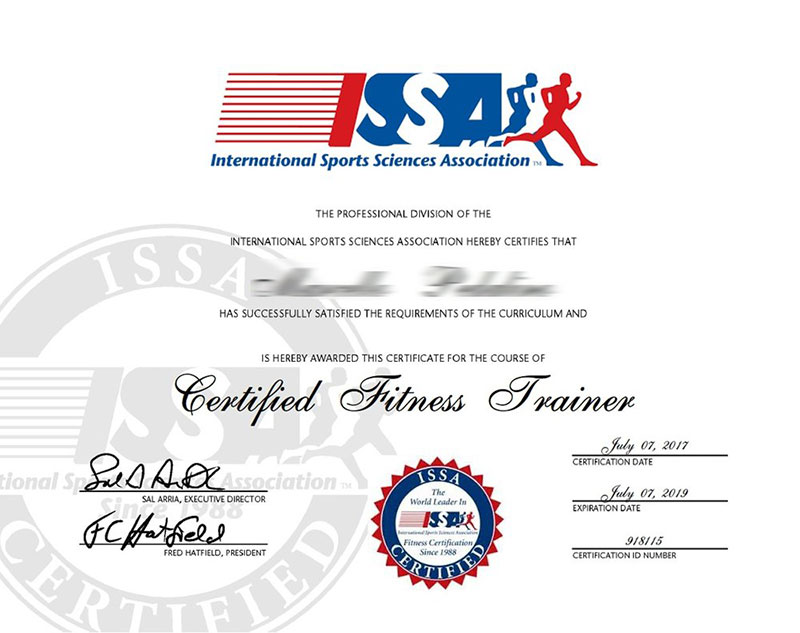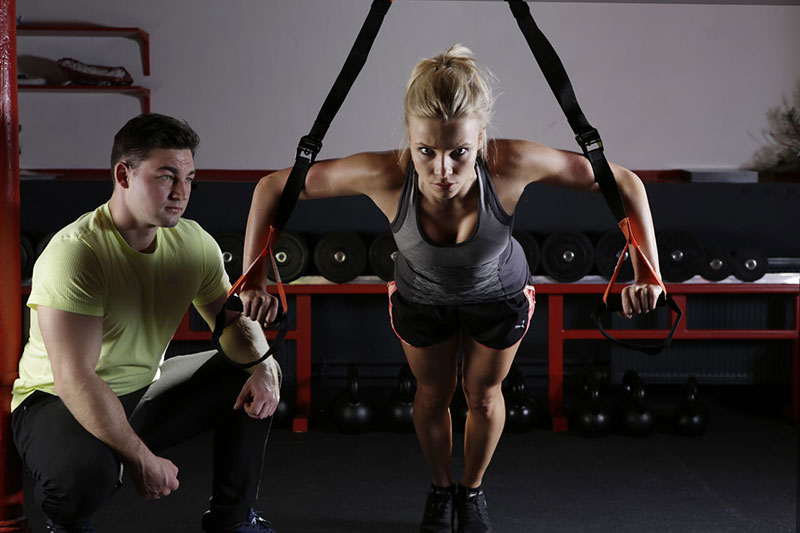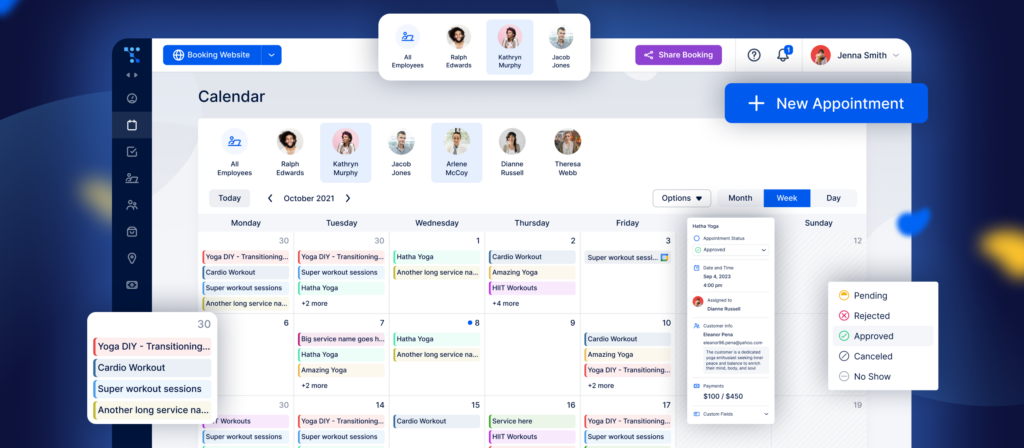Are you an aspiring gym business owner looking to dip your feet in these waters? Well, the question – how much will it cost to open a gym, seems like the first one you should have an answer to.
Although we can’t give you as straightforward an answer as you may like, we can walk you through all the necessary expenses you’ll have.
So, grab a pen and paper, and let’s calculate it together!
Insight Into the Average Cost of Opening a Gym
There are many factors to consider when calculating the costs of this business venture. Gym start-up prices vary greatly depending on the gym’s location, size, and ownership. For starters, ask yourself if you want to put your gym up for rent or not.
The average gym start-up costs can be anywhere from $15,000 to about $100,000. This range is more comprehensive compared to other start-up businesses. So if you plan on starting your own gym, make sure you have a substantial amount of money saved up, as it can get expensive. Your financial options play a significant role in your gym start-up costs. It would be best if you took the time to examine each available rental and loan choice before agreeing to a deal. Take into account the gym’s demographics and location to manage your finances better.
Prioritize the basics
Building a gym start-up from the ground up gives you the complete freedom to spend on whatever you want, however much you want. But that’s the first trap you can easily fall into. It is not wise to spend tremendous amounts in the initial phase of your gym. Focusing on basics in terms of equipment, amenities, and staff will help you break even much faster and leave you room for future improvement. Moreover, it helps you gain strategies to manage your business better.
Let’s now break down all the costs of a gym start-up one by one.
The Property Expenses for Your Gym

As expected, the facility remains the highest expense in gym start-up costs. Business owners can choose to either:
- Rent a facility
- Purchase a lot and build their gym
- Purchase already built space
The overall cost of the facility increases with bigger space and more popular locations.
Gyms located in hotspots are generally pricier. Higher costs are associated with street visibility, which serves as marketing. In the United States, gym prices vary depending on the city. But as a general rule, ensure that the location is worth the price you pay for it.
To make the most out of your expenses, carefully research potential locations and consider your target audience. Don’t make a hasty decision in selecting the area. Compare neighboring facilities, and choose a location with those beneficial to your business.
If you decide to rent a gym space, you can expect a cut from the first payment. Still, think about it carefully since expenses can pile up in your monthly settlement. Determine if this will be a future burden to your business before renting a place.
Never choose an option that will prevent you from making profits. A typical 2,000 sqft space would cost approximately $6,000 per month to rent. Always scout for available options before closing a deal; you might find a cheaper offer for a better location.
Necessary Tools and Equipment to Open a Gym
The costs for tools and equipment rank as the second-highest expense of gym start-ups. In deciding which tools and equipment to purchase, determine the type of gym you want to have. It is also vital to remember your target population so you don’t buy something they will likely never use.
Some gyms make general equipment available for everybody’s use. Other gyms allot an area for specific sports, such as kickboxing or weightlifting. Purchase the necessary equipment, but don’t go overboard.
Same as with facility expenses, equipment costs vary greatly as well. A fully-equipped public gym spends an average of $50,000 on gym equipment. On the other hand, a personal studio spends approximately $10,000. Check all available offerings before purchasing anything since gym equipment sold in sets is cheaper.
Rent the equipment to minimize gym start-up costs
Are you hesitant about being in this long-term? No worries, just rent the equipment instead of purchasing it.
You can save much more if you opt for rentals. There is no need to spend large amounts on gym tools that you would not keep. Rentals are practical and more convenient.
Many companies offer these rental services. Just be sure that the equipment is still in good condition.
Here are cost estimates for some of the most commonly used gym equipment, as reported by Lendio:
- Bench press $200
- Free weights: $500
- Elliptical machine: $1,000
- Stairmaster: $2,000
Certifications, Permits, and Licenses Required

When thinking about how much it costs to open up a gym, we can’t forget about the licensing and permits. You will need these papers to run your gym business smoothly. Necessary documents vary depending on the state, so be sure to check in with your local authority. Also, don’t forget about health and safety compliance permits, which are always mandatory.
The average cost for all these documents ranges from $250 to $1,000.
Gym owners can also register for personal trainer certification. Moreover, gym trainers should have proper training and certification.
Here’s the list of organizations that offer top training qualifications:
- American Council on Exercise (ACE)
- National Academy of Sports Medicine (NASM)
- American College of Sports Medicine (ACSM)
- National Strength and Conditioning Association (NSCA)
- International Sports Sciences Association (ISSA)
Essential Insurance Policies
While calculating the necessary cost to start a gym, you must also factor in the insurance. Be prepared for claims by having the right insurance policy for support.
The first step is to determine business risks before getting insurance. Check which coverage you need to ensure that you have the full range in case of unexpected circumstances.
Additionally, comply with legal requirements by paying due business registration fees on time. Typical gym insurance costs around $12,000 according to Fit Small Business. The premium will offer basic coverage, including general liability insurance and worker’s compensation. This way, you would not be burdened with hefty expenses in case of claims.
For property closure and lease concerns, seek the help of a professional. These kinds of services will require approximately $200 per hour. Preparing at least another $5,000 to $10,000 for additional legal documents is recommended by Trainerize. Here are some standard traditional forms for gym start-ups:
- Certificate of Incorporation
- Business Plan
- Non-disclosure Agreement
- Memorandum of Understanding
- Employment Agreement
- Operating Agreement
Employees Compensation

Gym start-ups typically hire at least ten employees for their initial opening. Employees will help you manage your gym. Choose a staff that delivers service that is worth the paycheck you give them. It is recommended to hire desk managers with energetic and open-minded qualities.
For local managers, check if they have the experience to make day-to-day operations more streamlined.
Personal trainers usually receive anywhere from $16 to $50 per hour. Consider hiring dieticians, yoga teachers, and CrossFit instructors. This personnel can improve your gym services.
Expect that these trainers will require more pay because of their specialty.
Having professionals is also helpful for your business’ financial aspect. Accountants and lawyers can handle financial matters, allowing you to focus more on the management side.
Employee Distribution for a Gym Start-Up
It is vital to cover all critical aspects of a fitness center. Here is the list of the usual gym employee distribution.
- 2-3 Desk Managers
- 2-3 Personal Trainers
- 1-2 Professional Cleaners
- 1-2 Freelancing Fitness Professionals
Advertisements and Marketing Strategies

Calculating the average cost of opening a gym can’t be complete without taking into account the marketing aspect of it. Taking care of gym advertising and marketing is a necessary step. You want to promote your gym to attract as many customers as possible. There are also many ways to advertise without spending too much.
Gym owners can use many marketing strategies to optimize advertisement costs. One way is to utilize all available social platforms. Aside from the fast transmission, social media makes sharing relatively easy. Gym members can easily share and refer their friends to the same gym.
Many gym and fitness communities make advertising easier. A simple post or click can reach thousands of viewers. Take note to put all important details whenever you post. Viewers can quickly determine your gym’s location when you place it in your ads.
There are also platforms where gym owners can pay to market their gym. These platforms boost your advertisements according to the amount you pay. This tactic is especially helpful for start-ups. Since you still do not have an established brand and client pool, you will need a boost to set you up nicely.
Getting the help of a marketing professional is also beneficial if you can afford it in the early stages of your gym start-up. You can ask them for advice and successful marketing strategies that you can use. They can give you instructions on managing marketing tools, making it easier for you.
Critical Points in Gym Marketing
In marketing your gym, here are the key points that should be present:
- Details about the Opening of the Gym
- Exclusive Single Day Pass for the first trial of probable gym members
- Membership projects and Offers
Make Your Day-to-day Easier With the Right Software
It is crucial for any business to have good software and hardware in place. The gym business is no exception. Good software and hardware might be expensive. Still, these are necessary to perform most gym transactions. Ensure that you have a functional system for sales and stable internet.
These devices will help run transactions with advanced payment methods. Some customers opt for cashless payments, so having these items in place will be an advantage. It is more cost-efficient to purchase gym management software subscriptions.
These subscriptions are easily renewable. Moreover, you can save much more compared to individually purchased software. The complexity of the system serves as the basis of its costs. Options can vary from $50 to $1,000 per month.
You can also lessen expenses by selecting targeted solutions for gyms. The key to finding good software and hardware is determining your priority. Take into consideration potential risks and client needs.
Get more bookings with the right tool for the job
Want to streamline your business but don’t know what’s the next step you should take?
How about introducing powerful software that keeps all of your appointments in line, your clients organized, and your business booming?
But why choose Trafft specifically? Well, because we understand the unique challenges gym owners face, and with that in mind, we created the perfect gym booking software.
Whether you’re managing staff schedules or coordinating personal training sessions, Trafft is your time-saving assistant. Our innovative features, tailored specifically to the fitness industry, simplify these tasks, freeing up your time for what matters the most – your clients.
Not sure if this is the right choice for you? Sign up and take Trafft for a test ride – it’s FREE for up to five users,
Reliable Security Measures
Gym start-up costs must include expenses you will need to pay for good security measures. This way, you are protecting yourself from potential threats and future claims. Likewise, gym members want to work out in facilities that are safe and free from harm.
There are many ways to heighten gym safety and security. One method is to issue gym identification cards to members and staff. This method ensures that only people with access can go in and out of the gym.
Some gyms with advanced systems generate QR codes for their members. These codes undergo scanning using smartphones. As mentioned earlier, the software and hardware also contribute to ensuring gym security.
Other gyms set the bar high by promoting exclusivity. They require gym appointments and select membership. While this may seem excessive, opening a gym that operates in this manner is a great option if your targeted audience is high-profile people. Since it can only be used by appointment, only a few members can use it at a specific time.
Ways to Increase Capital
Managing gym finances can be challenging, especially for first-time business owners. Here are some tips to keep your finances under control:
- Keep a budget in mind whenever you are planning to start a business. Having a set amount gives you a limit and helps you prioritize the essential aspects. You also prevent yourself from overspending.
- Do not set a budget that is equal to your present income level. Always make a goal to set funds that are way below that level. You can also exhaust other available resources to have additional income. Never spend more than your capability.
- Starting a business requires commitment. If you are already having trouble coming up with down payments, you are probably not yet ready. It would be a waste of time if you did not put all your heart and mind into it. Besides, you will also be wasting money if you are not fully committed.
- Loans can help you start your business, especially if you do not have a large budget. Some loans are available for starting business owners. Still, loans require excellent credit and a business background.
- Ensure that you have a clean record before applying for a loan. This way, you will save time from rejection and have higher chances of acceptance. Of course, having the money coming from your pocket is always better. A loan can help you but should not be your business foundation.
- Other start-ups seek the help of their family for financial aid. Although family help is easily reachable, do not take this for granted. If you must borrow money from your family, remember to pay it back with the right interest. Just like in a standard loan, pay back what is due with interest.
- Angel investors are another option, but you must pay them even if you do not become successful. These investors expect a share of your profit. Always think twice before asking for money. You want to avoid debts from piling up in the long term.
- It is always advisable to have a backup plan. Allot an emergency budget for unexpected circumstances. The extra funding will give you financial security. Furthermore, it will prevent you from being buried in huge debts.
FAQs about gym start-up costs
1. How much does it cost to start a gym?
The total cost to open a gym can vary significantly depending on several variables, including the gym’s location, size, equipment, staff, and marketing costs. Even a small to medium-sized gym can cost anywhere from $30,000 to $130,000.
2. What are the essential equipment costs for starting a gym?
Cardio equipment like treadmills, ellipticals, and stationary bikes, as well as weight equipment like benches, racks, and free weights, should be included in the essential costs of gym start-up. Mats, reflectors, and sound systems are a few other required items. Depending on the gym’s size and the equipment’s quality, the total cost might range from $10,000 to $50,000 or more.
3. What are the costs associated with building a gym facility from scratch?
Building a gym facility from the ground up can be expensive due to leasehold upgrades, permits, licensing, construction, and materials. Depending on the size and location of the gym, this price can vary significantly. Budgeting at least $100 per square foot of space is advised.
4. How much money should I set aside for initial marketing and advertising?
The target market, region, and level of competition will all affect how much money you should budget for the first round of marketing and advertising. It is advised to set aside at least 10% of your overall budget for marketing and advertising, which can be anywhere from $2,500 to $10,000 or more.
5. What is the typical range for monthly rent or lease of a gym space?
Depending on the location and size of the gym, the normal range for monthly rent or lease of a gym facility might vary substantially. While the price might be as high as $15,000 or more per month in central locations, it can be as little as $1,000 in smaller towns or cities.
6. What are the costs of hiring and training staff?
Salaries, benefits, payroll taxes, and training fees can all be included in the costs of hiring and training employees. You would need to recruit maintenance workers, receptionists, and fitness trainers, and the total number greatly depends on the size of the gym. Set aside at least 30% of your budget for employee costs.
7. How much should I budget for insurance and legal fees?
The price of insurance and legal fees may change depending on the gym’s location, size, and services provided. Budgeting at least $2,000 to $5,000 per year for insurance and legal costs is advised to safeguard your company from liability claims.
8. Are there any hidden costs to opening a gym that I should be aware of?
Indeed, starting a gym may involve unexpected costs, such as marketing, equipment upkeep and repairs, and electricity expenditures. Budgeting for these fees is crucial, and you should also have a backup plan in place, just in case.
9. What is the average ROI for a new gym?
The average return on investment for a new gym might change depending on a number of variables, including location, competition, and services provided. Typically, it takes 12 to 24 months for a gym business to break even. Depending on the business’ performance, the ROI might be 10% to 30% or more.
10. How long does it typically take for a gym to become profitable?
A gym start-up typically needs 12 to 24 months to turn a profit. Yet the time span might change depending on a number of variables, including the region, the level of competition, the services provided, and marketing initiatives. For your gym to be successful, you must have a sound business plan, budget, and backup plan.
Ending Thoughts on Gym Start-up Costs
There are many things to consider before building a gym from scratch. Gym start-up costs vary greatly. It is vital to have a budget to begin with and a financial plan to execute things smoothly. While we cannot give you a definite answer to the question of how much will it cost to open a gym, we believe this guide will help you calculate that by yourself.
Having a rough estimate of probable expenses can help you prepare the money needed.
It is crucial to allot money or emergency funds as well. A useful safety net goes a long way. Every business start-up goes through a lot, but that is part of the process.
Set a goal you want to achieve and work your way through it. Eventually, your efforts and investments will pay off. Don’t forget to take time to check that your products and services are in good shape.
Hungry for More?
Feeling ready to dive deeper into the world of fitness? Make sure you check out the following:
- How to Open a Gym: A Beginner’s Guide
- Gym Logo Ideas to Inspire You for Your Own
- Gym Owner Salary: How Much Do Gym Owners Make?
- How To Write A Gym Mission Statement That Sounds Great
- Catchy Gym Slogans to Use For Your Gym Business




